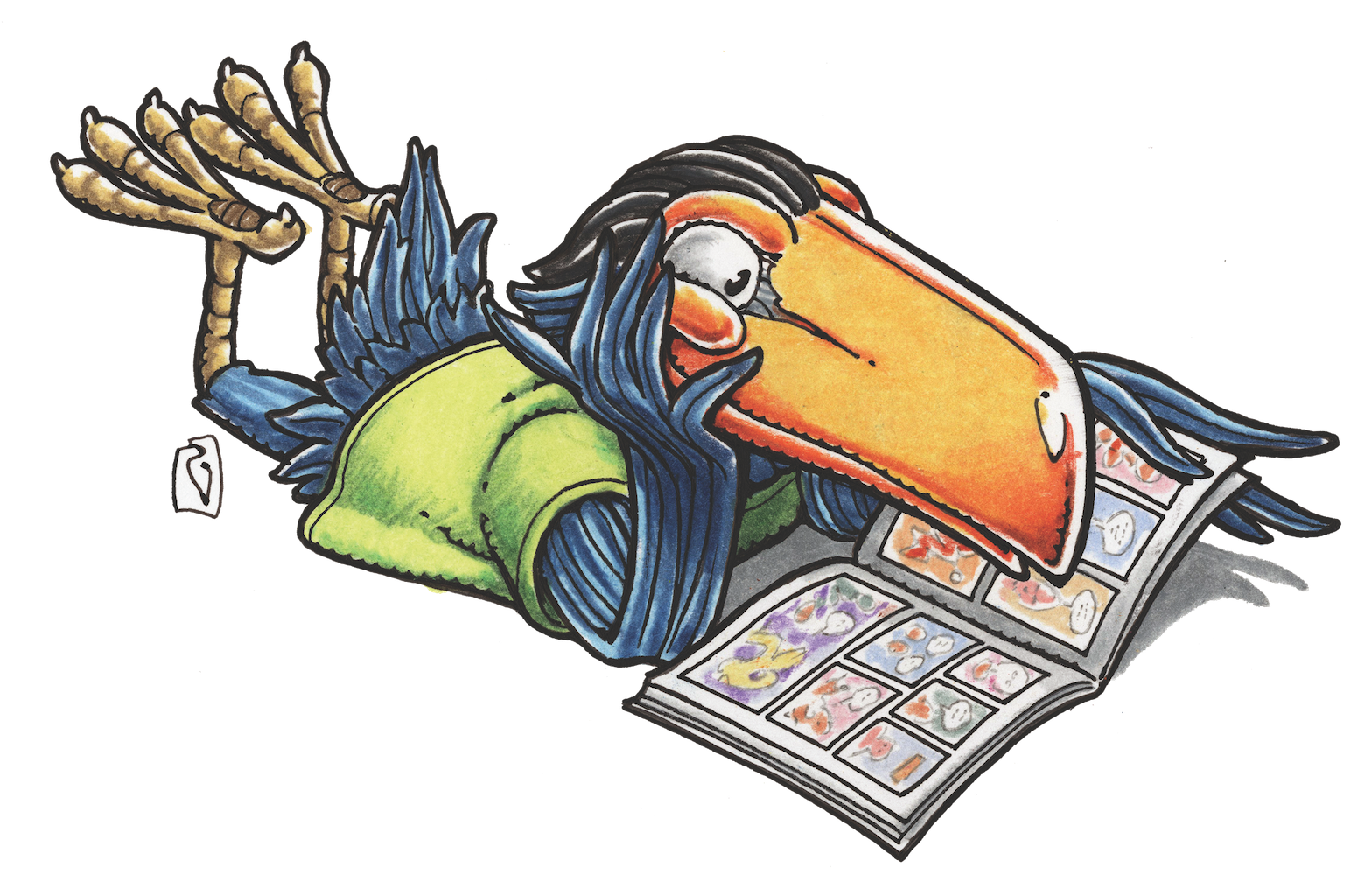STEVE LIEBER’S DILETTANTE
Dilettante 022: Starting a New Project with a Collaborator


A well-worn truism among comics freelancers that the best part of any project is getting the green light to get started, which leads to the worst part of any project: getting started. There’s often a lot of work that precedes “page one, panel one,” and I thought I’d discuss some of it here.
When you’re working with one or more collaborators, there are a lot of extra elements to take into account. Let’s break them down into two categories: Business and Creative. We’ll talk about Business first because no one likes it, so it’s more likely to be neglected.
You might think that the only thing you need to discuss with your collaborators is who does what. “You write! I’ll draw! That’s it!” This would be a terrible mistake. A creative partnership can go a lot of different ways, and it’s important to clearly communicate your needs and intentions from the very beginning. If you’re creating something new that you’ll own, you’re essentially starting a business with your collaborators as partners. Katie Lane, author of the Work Made For Hire blog says: “Not talking about business before entering into a business relationship is a great way of saying, ‘I don’t really care if this arrangement screws me over.’ ”
I won’t launch into all the specifics of what needs to go into a contract in order to protect you, your collaborators, and the work you’re creating—that’s what lawyers and agents are for. But notice how I said lawyerS and agentS? That’s because each individual collaborator should have their own representative in a negotiation.
Once you’re ready to write a contract, you need to prepare for success as well as failure. Failure is often easier—there’s nothing to divvy up! It’s deciding who reaps the various rewards of success that can really cause trouble. It’s one thing to split the profit from sales. What about licensing? Does the artist get half the money from a script book? Does the writer get half the money from a coffee mug that reprints one of the artists’ drawings? Can a movie studio option the property and hire one of the collaborators as a creative consultant without hiring the other as well? And what happens if one of the collaborators dies? Are decisions about the future of the work made only by the surviving collaborator, or by the survivor and a representative of the dead collaborator’s estate? Again, there are a million considerations, and you want your lawyers to have worked that stuff out long before a producer shows up with an offer and a ticking clock.
If you take one thing away from this essay, it should be this: Don’t enter into a business relationship without a contract.
Back on the creative side of things, you should also discuss how you prefer to collaborate. Some comics makers don’t have the time or inclination for a lot of back and forth. “The writer writes the script, the artist draws it, the publisher publishes it, and we’ll all say hi to each other at the signing at WonderCon next year.” Others prefer a much more organic collaboration, with sketches and suggestions flying back and forth via email throughout the process. Some writers produce elaborately detailed scripts with clearly specified camera angles, gestures, and incidental detail in every panel. Others prefer to leave most of the visual choices to the artist. Some artists like to run every choice by their collaborator or editor, sending thumbnail layouts before pencils, pencils before finishes. Others go straight to the finish. There’s no right or wrong here, but if you have preferences either way, it’s important let your collaborators know in advance.
Let them know your hard limits, too. If you have religious, political, ethical, or aesthetic objections to certain types of content, make them clear in advance. Don’t wait until you receive a script set entirely in a strip club to tell your writer that you refuse to draw nudes. If you object to depictions of smoking, tell your artist before she choreographs an important plot point around sharing a pack of cigarettes.
Now for the fun part: the creative steps a comics maker can take in preparation for a new project, before they start writing or drawing. I like to assemble reference as early as possible. Sometimes, if I’ve seen a script or a plot outline, I can look for something specific. “The next issue has a series of murders that take place in a automobile factory in 1930, so I’ll look for photos of an assembly line just to start getting ideas of how they work, and how the spaces are arranged.” Sometimes you’ll only have general information about a project or a storyline. If you’re going to be drawing a competition between two Olympic ice skaters, try to immerse yourself in that world. Learn as much as you can about skating and training and coaching and the culture that surrounds them in preparation for the first script’s arrival.
The reference can take a lot of different forms. You might find some of these steps helpful:
Bookmark useful links.
The last thing you want at 3:00 AM is a struggle to find the right combination of Google search terms to re-locate that article about 14th century beekeepers.
Subscribe to relevant blogs, Tumblrs, Pinterest boards, and Instagram accounts.
I don’t know why, but my artist friends are continually surprised at how often the exact picture they need shows up in their feed the day they need it.
Visit the library and bookstores to find books that deal with your subject.
The more general reading you do about your subject and setting, the easier it’ll be to make that world feel lived in and real.
Locate useful props.
Drawing a contemporary war story? You’ll be very glad to have full size Airsoft replicas of a some of the more common rifles like an AR-15 and an AK-47. Drawing a Western? See if you can find a Breyer horse or two to draw from.
Be on the lookout for chances to observe relevant material from life.
If you’re drawing “Love on the Mats: A Jiu Jitsu Romance” get to a gym so you can watch the students roll. See how they interact with each other and their instructor. You’ll bring so much more life and verisimilitude to the story than you would if you only relied on your imagination or what you found online.
And because I like to practice what I preach, I’m going to wrap this up here. I’ve recently taken on the position as artist on Valiant’s Quantum and Woody series, and I need to find someone in Portland who will let me sketch their goat.
Artists and writers: what steps do you take to prepare for a new project? Let me know on Twitter @steve_lieber.
Steve Lieber’s Dilettante appears the second Tuesday of each month here on Toucan!